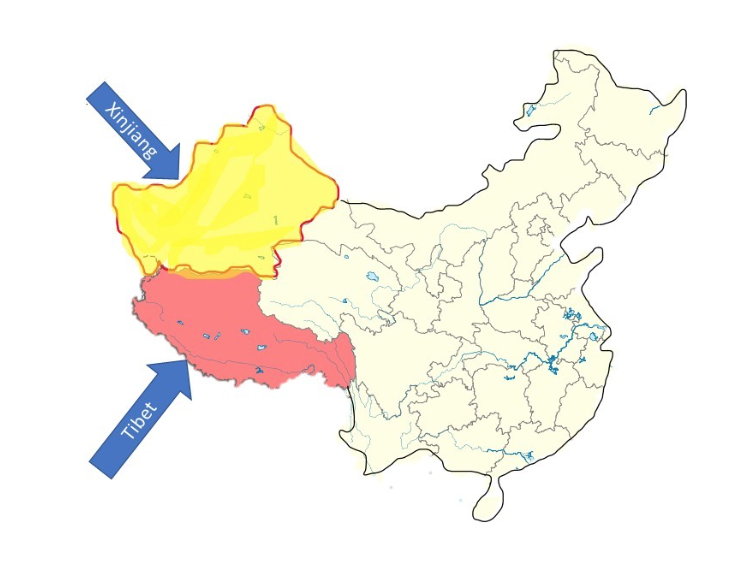Beginning in 1959 and continuing through to today, the Communist Chinese government has perpetrated genocide against the Buddhist people of Tibet in the Tibetan Autonomous Region north of the Himalaya Mountains in China.
The International Commission of Jurists (ICJ), a human rights organization composed of 60 eminent lawyers and jurists, has documented China’s practices in Tibet.
These practices have included use of forced labor resulting in the deaths of thousands of Tibetans; forced sterilization of women; widespread famine from the destruction of farmland and irrigation systems; destruction of trade and commerce, devastating the livelihoods of thousands of Tibetans; systematic religious persecution and forced indoctrination into Communist ideology; large-scale bombing; confiscation of property from monasteries, private individuals, and former Tibetan officials; imprisonment, deportation, torture, and murder of thousands of people; and the transfer of Han majority people into the region.
Since 2014, these same practices are also happening against the Uyghurs, a Turkic Muslim minority in Xinjiang Autonomous Region in western China.

China map with Xinjiang and Tibet. Image by Das steinerne Herz|CC BY-SA 3.0| License: https://tinyurl.com/yzpewa6e | modified image
The reasons are the same: China wants to control the two regions.
About 94% of the Chinese population is ethnically Han. Ethnic minorities such as the Tibetans and the Uyghurs, although very small in numbers, present a potential threat to the homogeneous Chinese national identity and a perceived danger of provocation and dissension.
In addition, both the Tibetans and the Uyghurs are concentrated in geographical regions that the Chinese government wants.
In 2013, Chinese President Xi Jinping launched a global development project known as the Belt and Road initiative (BRI). The BRI will expand China’s economic and political influence on a global scale.
China is developing pipelines, highways, railways, whole port cities, and faster border crossings in a network of interconnectivity, with China at the hub of six economic corridors that expand China’s economic and geopolitical influence outward and increase the flow of raw materials and resources inward, back to China. The BRI reaches throughout Asia to Europe, Australia, to many countries in Africa, and ultimately to the Americas as well.
Three of the six economic corridors connecting China to the world run directly through Xinjiang. And the Uyghurs are in the way. They could potentially obstruct Chinese development with unrest aimed at independence.
China wants control of Xinjiang for another reason. Xinjiang is expected to produce 35 million tons of crude oil by the end of 2020. Xinjiang also has the country’s largest coal reserves – an estimated 40 percent of China’s national total, and the country’s largest natural gas reserves. And the Uyghurs are sitting on it.
The story in Tibet is a direct parallel to the Uyghur situation in Xinjiang.
BRI networks in Tibet are directed towards the neighboring countries of Nepal, India, and Bhutan. Further connections will run from Tibet to the Bangladesh-China-India-Myanmar Economic Corridor.
The Tibetans are in the way of Chinese development and control in Tibet just like the Uyghurs are in the way in Xinjiang. Tibet has natural resources that China needs; over 30 percent of the country’s hydro-electric power comes from Tibet.
Two genocides, same playbook. China, today’s behemoth on the planet, appears to have near-complete impunity for its egregious human rights violations.



